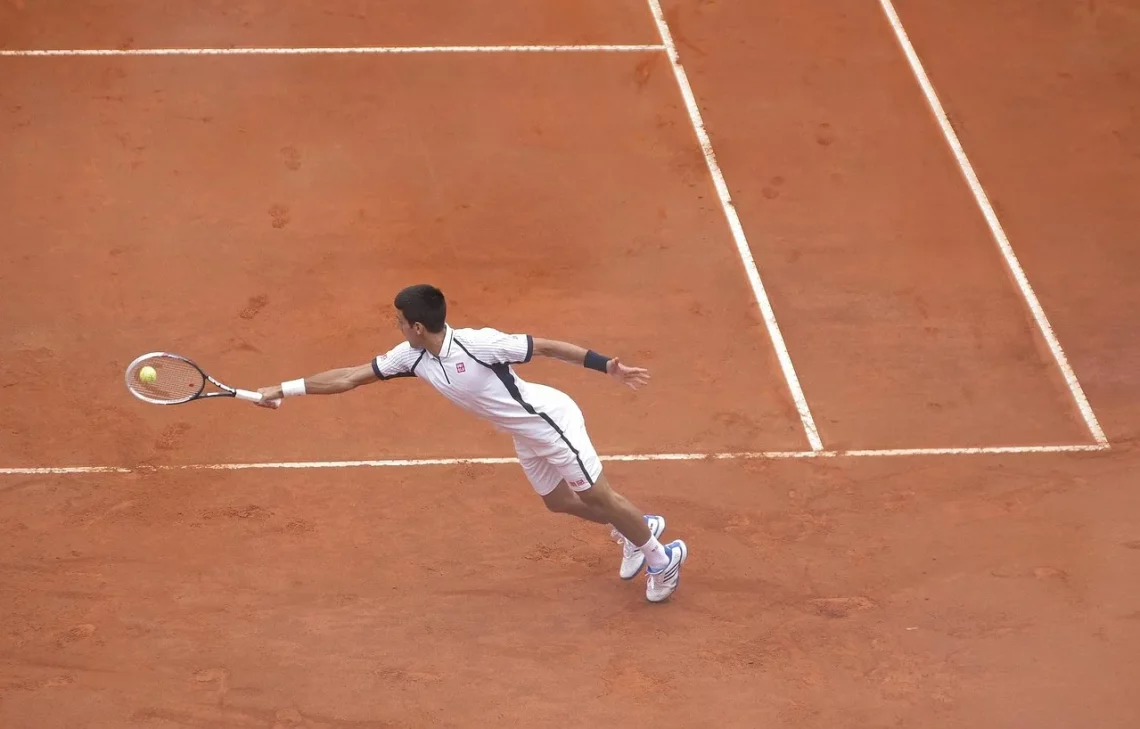
Mastering Grip and Overgrip: Enhance Your Tennis Performance
Mastering grip and overgrip is essential for any tennis player looking to elevate their game. While technique, stamina, and strategy play significant roles in performance, the subtle yet crucial aspects of grip and overgrip can greatly influence how effectively a player can execute their shots. The grip on the racket is the player’s immediate connection to the game, affecting everything from power and spin to control and comfort.
Choosing the right grip size, understanding how to maintain it, and selecting the appropriate overgrip can make a world of difference on the court. These elements not only impact your performance but can also prevent injuries and improve your overall enjoyment of the game. Tennis enthusiasts, whether beginners or advanced players, should pay attention to these details to enhance their skills.
As we delve deeper into the world of grips and overgrips, it becomes clear that mastering these components is not merely about personal preference but about understanding how they interact with your playing style. This foundational knowledge will empower you to make informed decisions, adapt your approach, and ultimately, improve your game.
Understanding Grip Size and Its Importance
Choosing the right grip size is paramount for any tennis player. The grip size affects not only how comfortably you hold the racket, but also your overall performance on the court. A grip that is too small can lead to excessive wrist movement, increasing the risk of injury and reducing control. Conversely, a grip that is too large can result in tension in the hand and arm, which can hinder your swing and cause fatigue.
To determine the correct grip size, players can measure the distance from the tip of their ring finger to the second crease of their palm. Most manufacturers provide a guide to help players choose the right size based on this measurement. It’s worth noting that while comfort is subjective, a grip that fits well will help you maintain a consistent hold on the racket during play.
Moreover, grip size can affect your shot-making abilities. A smaller grip allows for more wrist action, which can be beneficial for generating spin. On the other hand, a larger grip provides more stability, which is essential for powerful strokes. Players must find a balance that suits their playing style, as this can enhance their ability to execute various shots effectively.
In addition to choosing the right size, players should also consider how grip materials can affect performance. Grips made from rubber or synthetic materials can provide different levels of traction and comfort. Some players may prefer a textured grip for better control, while others might opt for a smoother surface for a more natural feel. Experimenting with different materials can help players identify what works best for their style and comfort.
Maintaining your grip is equally important. Over time, grips can wear down or become slick due to sweat and dirt. Regularly replacing your grip or using an overgrip can help ensure that you always have a reliable hold on your racket. This maintenance not only improves performance but also contributes to injury prevention by allowing for a secure, comfortable grip throughout matches.
In summary, understanding and selecting the right grip size is crucial in tennis. The right size enhances comfort, control, and shot-making ability, while proper maintenance ensures consistent performance. Players should take the time to assess their grip needs and make adjustments as necessary to maximize their potential on the court.
Exploring the Benefits of Overgrips
Overgrips are an essential accessory for tennis players, providing additional comfort, moisture absorption, and improved grip. These thin layers are applied over the existing grip and can significantly enhance your playing experience. One of the primary benefits of using an overgrip is the added cushioning it provides, allowing for a more comfortable hold during long matches.
Overgrips come in various materials, each offering unique advantages. Some are designed specifically for moisture absorption, which can be a game-changer for players who struggle with sweaty hands. These overgrips help maintain a firm hold on the racket, preventing it from slipping during play. Others are made with tacky surfaces that promote grip and control, catering to players who prefer a more secure feel.
The versatility of overgrips is another appealing aspect. Players can easily replace them as needed, making it a cost-effective solution for maintaining grip quality. Depending on how often you play, changing your overgrip regularly can help ensure that you always have optimal performance on the court. This practice not only enhances grip but also contributes to the longevity of the underlying grip, as it protects it from wear and tear.
Moreover, overgrips can be a great way to customize your racket. They come in a variety of colors and designs, allowing players to express their personal style. This customization adds an element of fun to the sport, making it more enjoyable and personalized.
While overgrips are beneficial, players should also be aware of the potential downsides. Some overgrips can alter the feel of the racket, making it feel bulkier or different than intended. It’s essential to try different types to find one that complements your style without compromising your connection with the racket.
Ultimately, overgrips are an invaluable tool for tennis players. They enhance comfort, improve grip, and allow for personalization, all while protecting the underlying grip. By exploring various options and regularly replacing them, players can significantly improve their overall performance and enjoyment of the game.
Grip Technique: How to Hold the Racket Correctly
The technique of holding the racket correctly is fundamental for any tennis player. A proper grip not only facilitates better shot-making but also ensures that players can execute a variety of strokes with precision and power. Understanding the different types of grips and when to apply them can greatly enhance a player’s effectiveness on the court.
There are several primary grip types in tennis: the Eastern grip, the Western grip, and the Continental grip. Each has its unique characteristics and applications, and players should familiarize themselves with these to determine which suits their style best.
The Eastern grip, for instance, is popular for its versatility and is often used for forehand shots. To achieve this grip, players should hold the racket as if shaking hands with it, placing the base knuckle of their index finger on the third bevel of the racket handle. This grip allows for a balanced mix of power and control, making it a favorite among many players.
In contrast, the Western grip has become more prevalent in recent years, especially among players who prefer heavy topspin shots. This grip involves placing the palm under the racket handle, which allows for an upward swing trajectory. While this grip can generate significant spin, it may require more adjustment for players transitioning from traditional grips.
The Continental grip is often favored for volleys and serves. It allows players to hit the ball with both topspin and slice effectively. To achieve this grip, players should place the base knuckle of their index finger on the second bevel, creating a versatile grip that can adapt to various situations on the court.
Regardless of the grip type, players must focus on maintaining a relaxed hand position. A tense grip can lead to mishits and fatigue, while a relaxed hold allows for greater wrist movement and better shot execution. Players should regularly practice their grip technique to build muscle memory and ensure that they can transition smoothly between different grips during play.
In conclusion, mastering grip technique is essential for tennis players. Understanding the various grip types and how to hold the racket correctly can significantly influence performance. Players should take the time to experiment with different grips and practice maintaining a relaxed hold to enhance their overall game.
Maintaining Your Grip for Optimal Performance
Proper grip maintenance is a crucial aspect of tennis that is often overlooked. A worn or slick grip can hinder performance, leading to slips and mishits. Therefore, players should prioritize the upkeep of their grips to ensure they can play at their best.
One of the first steps in maintaining your grip is regular cleaning. Over time, sweat, dirt, and oils from the hands can accumulate on the grip surface, making it slippery and uncomfortable. Players can use a damp cloth to wipe down the grip and remove any buildup. For a deeper clean, mild soap and water can be used, but it’s essential to let the grip dry completely before use to avoid damaging the material.
Replacing grips is another vital component of maintenance. Depending on frequency of play, players may need to replace their grips every few weeks or months. Keeping an eye on the condition of the grip is essential; if it appears worn, frayed, or loses its tackiness, it’s time for a replacement.
Using overgrips can also aid in grip maintenance. By applying an overgrip, players can protect their underlying grip from wear and tear, extending its lifespan. Overgrips are easy to replace and can be customized to cater to personal preferences for comfort and texture.
Additionally, players should be mindful of how they store their rackets. Leaving them in extreme temperatures or direct sunlight can affect the grip material, causing it to degrade faster. Storing rackets in a protective cover or bag can help mitigate these risks.
Lastly, players should consider the impact of their playing style on grip maintenance. Those who hit with a lot of topspin may find that they wear down their grips more quickly due to the friction involved. Adjusting playing techniques or being more aware of grip wear can help players manage their equipment more effectively.
In summary, maintaining your grip is essential for optimal tennis performance. Regular cleaning, timely replacements, and the use of overgrips can significantly enhance comfort and control. By prioritizing grip maintenance, players can ensure they are always ready to perform at their best on the court.
—
This article is intended for informational purposes only and should not be considered medical advice. Always consult a healthcare professional for any medical concerns or conditions.




